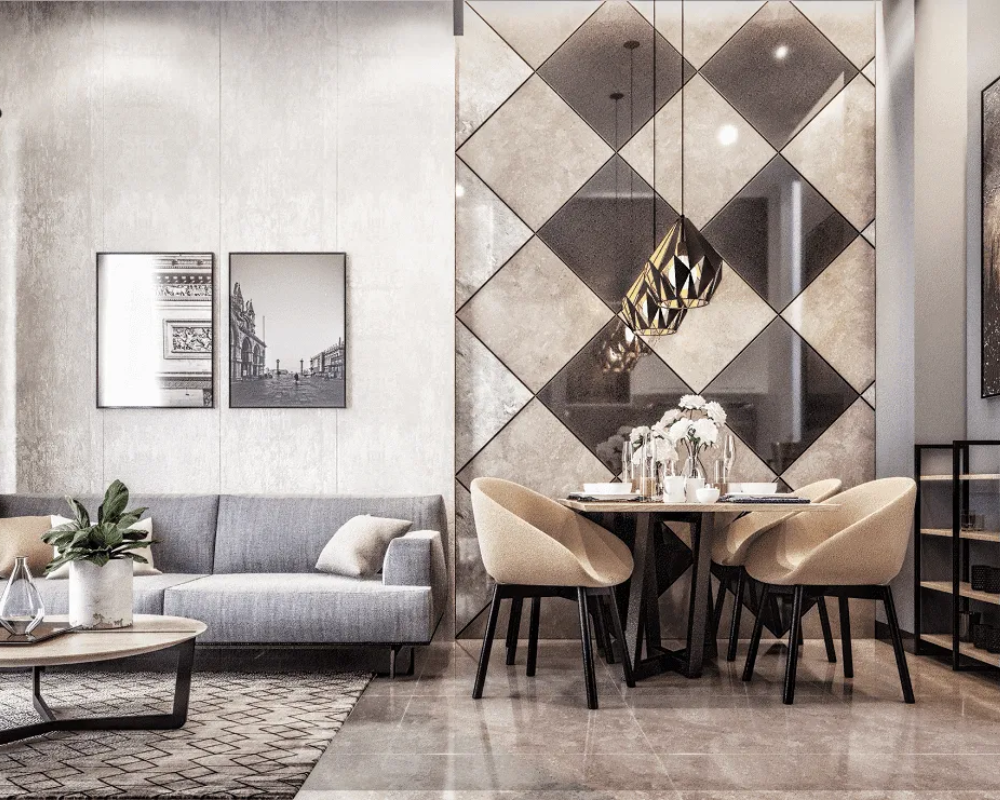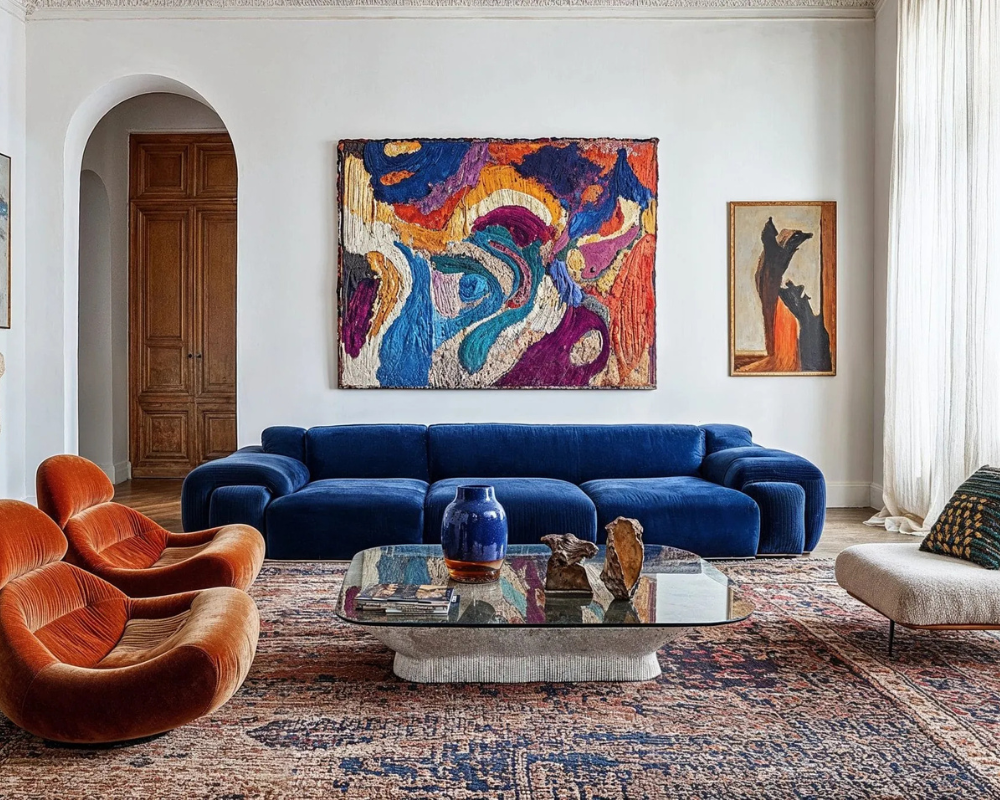Original art can transform a house from feeling merely decorated to genuinely lived-in. Unlike mass-produced prints that simply fill space, original pieces possess a unique presence that can create subtle tension, invite contemplation, or evoke memories within a room. The thoughtful selection and placement of these pieces significantly impact the overall atmosphere.
Quick Tips for Hanging Original Art Effectively:
- Measure carefully: Always measure from the hanging mechanism on the back of the artwork, not just the top of the frame.
- Use appropriate hardware: Employ hammers and nails for lighter pieces, and drills with wall anchors for heavier items like reliefs. Adhesive hooks can work for very light art, especially on smooth surfaces like tiles.
- Center or consider furniture: A single artwork usually looks best centered on a wall. However, if there’s furniture below it that’s off-center, consider aligning the artwork with the furniture instead.
- Hang at eye level: Aim for the center of the artwork (or the horizontal center of a gallery wall) to be approximately 57 inches from the floor.

Incorporating Original Art to Enhance the Lived-In Feel:
Art’s role in interior design goes beyond mere wall decoration. It can influence a room’s pace, draw attention, and alter its mood. The key is to choose art that doesn’t perfectly match the space but introduces a touch of complexity.
Here are ways to select and integrate original art:
1. Go Big (Wisely)

A large statement piece works well in spacious rooms. In smaller spaces, opt for minimalist large-scale art to avoid overwhelming the area. Oversized art creates significant negative space, which is just as important as the artwork itself. Let the art’s boldness speak for itself without needing overly decorative surroundings.
2. Embrace Sets (1, 2, 3)

If you struggle with themes, consider diptychs (two-part artworks), triptychs (three-part artworks), or art series. These create a visual rhythm and guide the eye through the space in a deliberate way, offering a sense of sequential viewing. Large multi-part pieces can even function as unique room dividers.
3. Curate a Gallery Wall

Gallery walls are a popular way to display multiple pieces that reflect your personality and home. Look for affordable art options and follow helpful tips for arranging them effectively.
4. Think Beyond Walls

Art doesn’t always need to be hung. Display pieces on open surfaces like floors, mantelpieces, or shelves. Avoid overcrowding a single piece with too many other items. Partially obscuring art behind books or lamps can add intrigue. Remember that art on a mantel is meant to be appreciated, not just accessorized.
5. Introduce Sculpture

Sculptures draw focus inward and offer a break from wall-mounted art. They can be abstract and are available in various forms, including functional furniture pieces. Consider the impact of weight and material combinations (glossy vs. matte, carved wood vs. resin). Avoid grouping multiple sculptures unless you intend a gallery-like feel.
6. Explore the Texture of Reliefs

Reliefs offer a blend of sculpture and painting, adding a three-dimensional element. They suit both traditional and modern minimalist interiors. Light them from an angle to enhance the shadows they create. They work well in transitional areas like hallways, acting as visual pauses.
7. Consider Wrapped Canvas

When buying original art, look for canvases stretched over a frame or mounted on MDF for easy hanging. Wrapped canvases have a contemporary feel and don’t require glass, eliminating glare. Finished edges allow them to be displayed without a frame if desired.
8. Personalize with Commissioned Art

If you can’t find the perfect piece, commission an artist whose work you admire. This requires you to define your aesthetic beforehand. Trust the artist’s process and be open to the final piece finding its own ideal location in your home.
9. Beautify with Ceramics

If paintings and sculptures aren’t your style, consider incorporating ceramics. Handcrafted bowls, plates, and cups can be both functional and decorative. Display them on shelves or use large vases as standalone floor décor.
10. Make Framing an Integral Part

Framing isn’t just a finishing touch; it recontextualizes the artwork. Different framing styles (float mounting, shadow boxing, raw edges) tell different stories. Choose frames that contrast or add complexity, not just match. Inexpensive frames can detract from good art, so consider leaving edges bare if proper framing isn’t immediately possible. Frames can also indicate the artwork’s era. Think of framing as the final artistic decision, like a last brushstroke.

